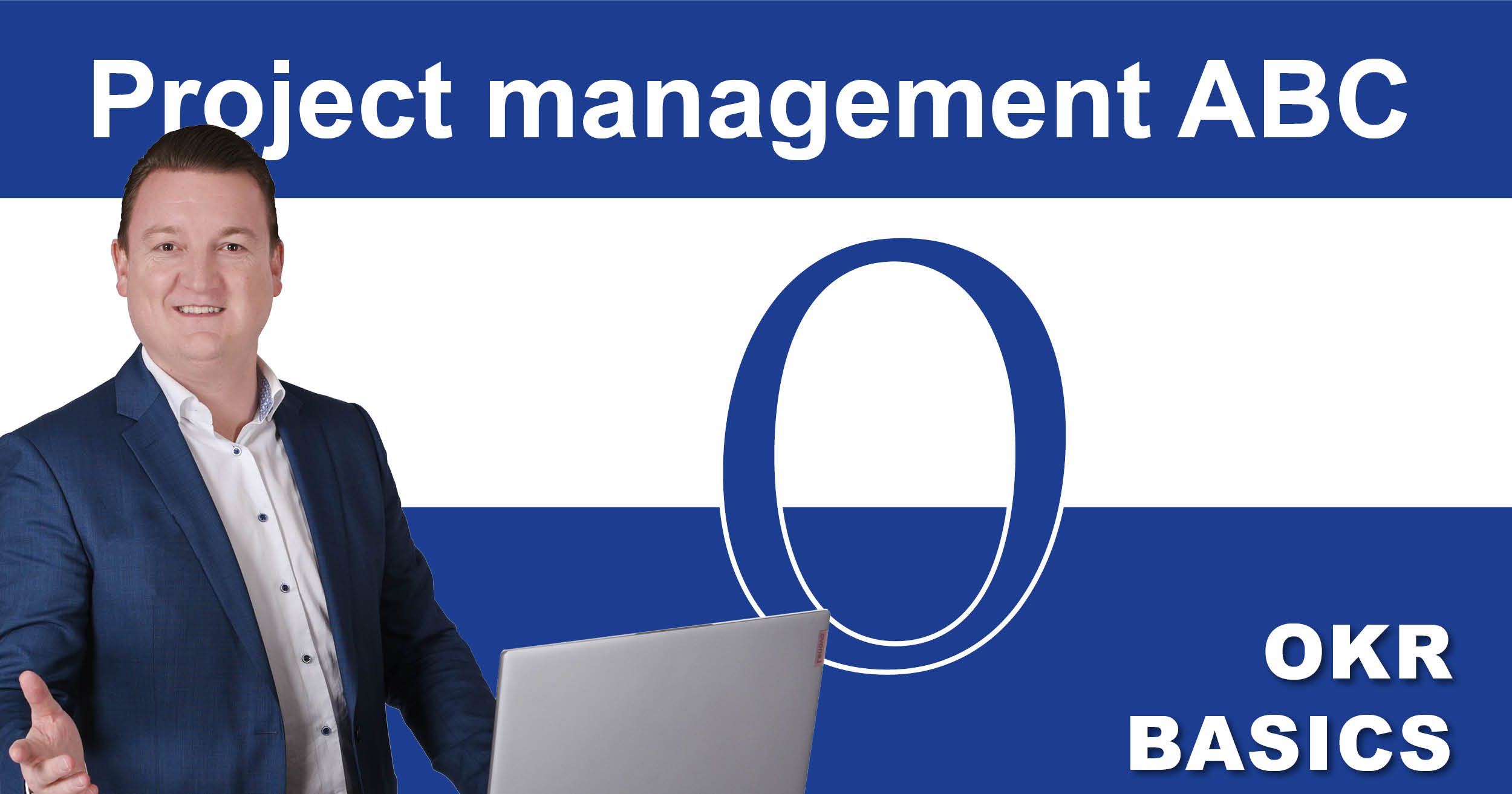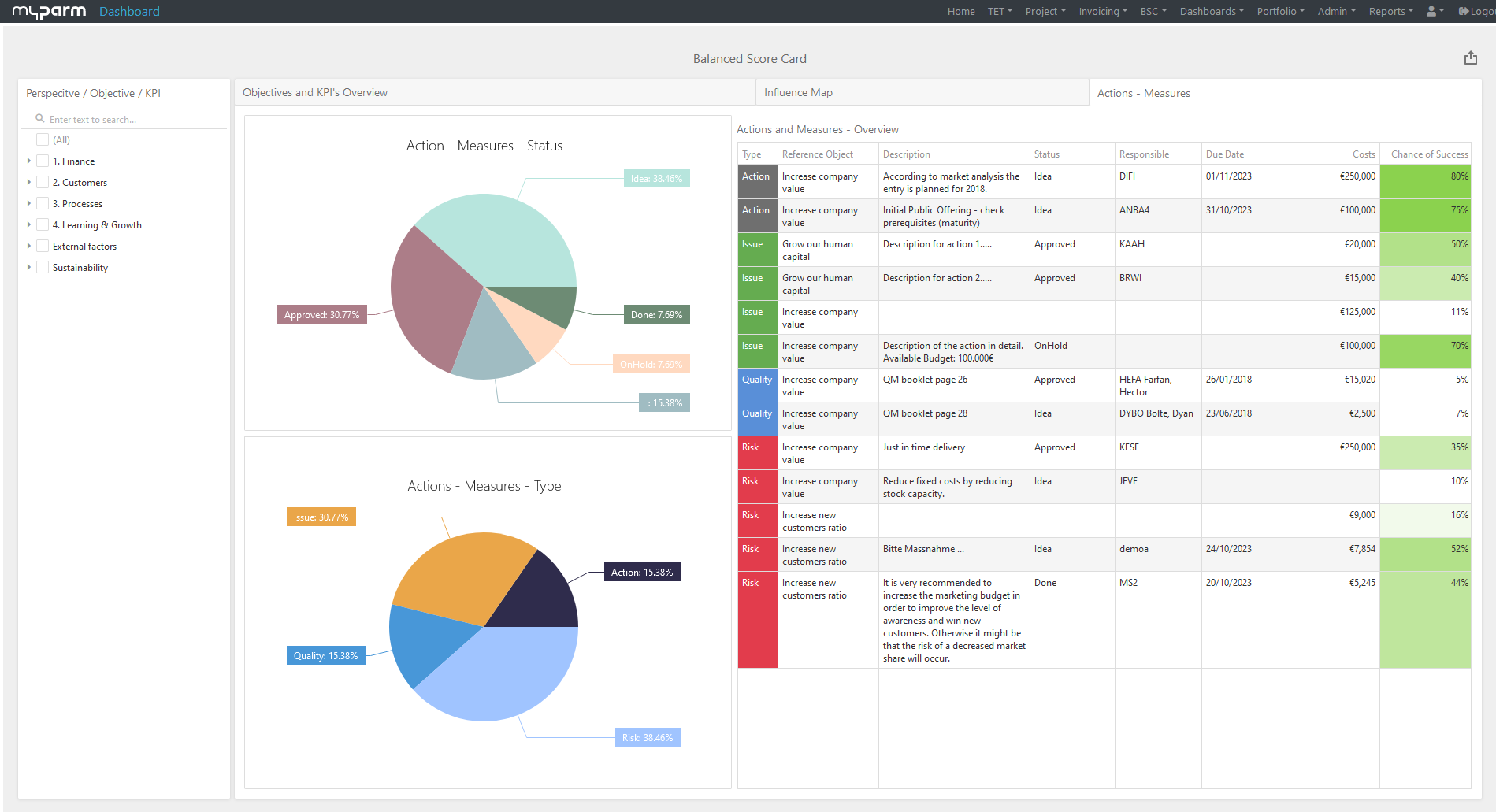Project Management ABC: O for OKR
Strategy implementation in an agile environment with OKR – Part 1: Basics

Every company tries to improve its performance in order to achieve better results. There are countless ways to achieve this. Recently, the abbreviation OKR has often been used in this context, especially in agile environments. Parm AG presents what OKR means and how the method works.
This article is the first part on the topic of OKR and deals with the basics of the method. In the second part you will read how the method is applied, how you can use it in project management as well as tips and tricks when working with it.
What is OKR?
OKR stands for Objectives and Key Results and is a management method that became known in particular through its use at IT giants such as Google. This method brings clarity to a company’s goals and vision and combines them with measurable key figures. In this way, companies, but also individual divisions, departments or teams can be strategically aligned. By involving employees in the process of goal setting, each employee knows how he or she can contribute to the company’s goals and is motivated to help achieve them. OKR is therefore not a project management framework, but a general method for goal setting.
OKR fulfils three functions:
- Framework: OKR provides a framework for the formulation of qualitative goals (Objectives) and quantitative key figures (Key Results) with which the achievement of the goals is measured.
- Strategic link: OKR connects the company’s mission statement, vision and mission with the operational business.
- Agile process: Agility is lived throughout the entire company through a continuous process.
The method was developed by Andy Grove in the 1970s and helped the well-known company Intel back on the road to success at that time. For this, Grove combined the well-known SMART method, with the help of which goals are phrased in a specific, measurable, attractive, realistic and scheduled manner, with Peter Drucker’s Management-by-Objectives method (MbO), in which employees were given the opportunity to participate in determining the priorities of a company for the first time.
«With OKR, measurable goals are set, measured and revised at relatively short intervals so that corporate strategy is supported and employees are motivated.»
Elements of OKR
The central elements of the OKR method are objectives and their associated key results.
- Objectives (O): Objectives describe what is to be achieved in the short term (in about 3 months). They should be short, inspiring and motivating. It is important that these objectives are qualitative and that the result delivers clear added value for the company. They are not exclusively set by the company, but also formulated by employees or entire teams.
- Key Results (KR): Key results are about making the objectives measurable. Therefore, as a rule, 2 – 5 key results are assigned to an objective, which indicate the degree to which the objective has been achieved.

In order for the objectives and key results to fit the corporate strategy, the strategy should also be defined. This means that values, the mission statement, vision and mission of the company, as well as the goals should be clearly defined.
- Mission Statement: The mission statement defines the purpose of the company. It combines values, vision and mission and thus serves to clearly position the company. It also serves as a basis for the formulation of Moals and OKRs.
- Values: Every company should have 4 – 6 values that are credibly lived.
- Vision: The company vision shows where the company should be in 5 – 10 years and thus provides orientation.
- Mission: The mission is designed for a period of 3 – 5 years and defines the current actions in the company with all goals, strategies and plans to ensure that the vision is achieved in the future.
- Moals: Moals stands for Mid-Term-Goals and thus defines concrete goals to be achieved within one year so that the mission statement can be pursued.
The vision, mission and moals are thus broken down into short-term goals, the OKRs. Projects and daily tasks are then derived from the defined OKRs.

OKR Master and Coach
An OKR Master or OKR Coach can help both with the introduction of the OKR method and with its application. This person supports the company, departments or teams in their work with OKRs and is responsible for ensuring that the method is implemented correctly. Therefore, he or she organises the entire process, plans meetings and moderates them or is available for all questions related to the process.
Differentiation between BSC and MbO
At first glance, OKR has many similarities with the Balanced Scorecard (BSC) and with the Management by Objectives approach, as the method was derived from this. However, there are some key differences.
| OKR | BSC | MbO | |
| Planning horizon | Approx. 3 months | 1 year | 1 year |
| Target attainment | Approx. 60 – 70 % | 100 % | 100 % |
| Target dynamics | High: Targets are regularly adjusted to changing conditions | Low: Targets are defined and maintained at the beginning of the period | Low: Targets are defined and maintained at the beginning of the period |
| Target formulation | Qualitative targets derived from the goals that are most important for the next 3 months | Classically four strategic perspectives: Financial, customer, internal processes, learning and growth | Quantitative goals |
| Target focus | Outcome-oriented: Path of goal achievement crucial |
Output-oriented: Results crucial | Output-oriented: Results crucial |
| Goal-setting | Top-down and bottom-up | Top-down | Top-down |
| Target achievement | Agile | constant | constant |
| Use for performance appraisal or bonuses | No | Yes | Yes |
Due to the central differences, however, it is also possible to link the various approaches. For example, OKR can help structure the goal-setting process of the four perspectives of a balanced scorecard.

Advantages of OKR
- Focus: OKR provides clarity on the most important goals, tasks and indicators in the next cycle, thus creating a clear focus.
- Alignment: OKRs are always aligned with a company’s mission statement and strategy. They help employees to understand and internalise the company’s mission statement and thus enable them to set priorities and use resources sensibly.
- Motivation: As OKRs are not exclusively set by management, but involve employees in setting their own goals, they are motivated more. Ambitious goals increase motivation even more.
- Clarity: OKRs create transparency in the company, improve understanding of the corporate strategy and make success measurable.
- Communication: Clear and transparent goals enable every employee to see how they can contribute to the company’s success. In this way, OKRs promote teamwork and communication.
- Agile: OKR fits into agile working environments because it is an agile process characterised by short cycles, regular feedback, updates and changes.
- Resource utilisation: Clear priorities help to decide how resources should be optimally used to achieve the set goals.
- Strategy: OKRs link mission, vision, mission and strategy to operational planning. The regular adaptation of goals to changing conditions helps to remain flexible and still achieve the company’s goals.
Challenges of OKR
- If OKR is used as a control instrument or for staff evaluation, it can have a demotivating effect
- The effort is quite high, especially during the introduction and the first cycles
- OKR cannot work without an open, agile corporate culture
- The high level of transparency can create pressure or resentment among some employees
- OKR needs a clear mission statement
- Too many objectives can be overwhelming to the company, therefore they should be limited to 2 – 5 objectives
- Objectives that are too simple or set too high can be problematic. With the former, the company falls short of its possibilities, while the latter can have a demotivating effect. Therefore, a realistic target achievement level of 70 percent should be aimed for.
- Not every objective can be represented exactly by key results. It may be that the achievement of some KRs is necessary to reach the objective. However, this does not necessarily mean that the objective will actually be achieved if the key results are fulfilled.
Conclusion
The OKR method can help a company fulfil its mission statement. Used correctly, it is an effective method to achieve the objectives and at the same time motivates the employees to great commitment.
Would you like to know how OKR is applied? Then look forward to the second part of this report.
Learn more about the project and portfolio management software myPARM:
Would you like to get to know myPARM in a demo presentation? Then make an appointment with us right away!
